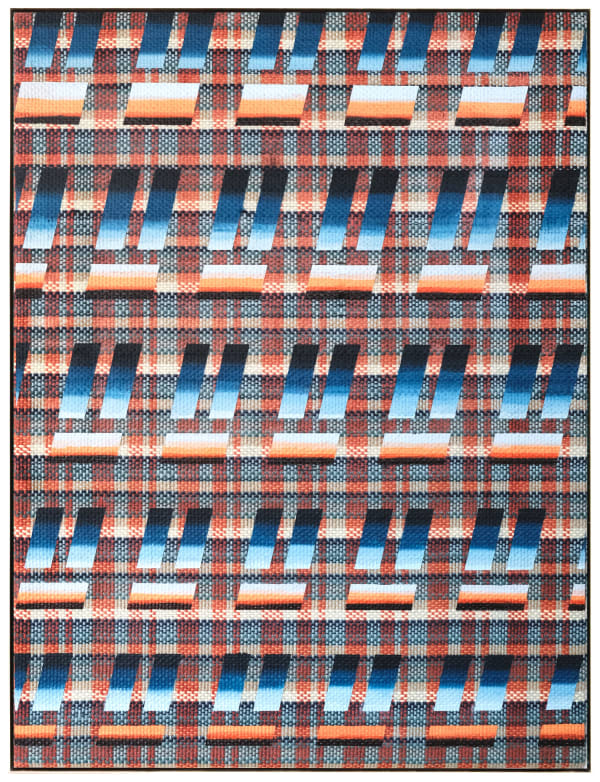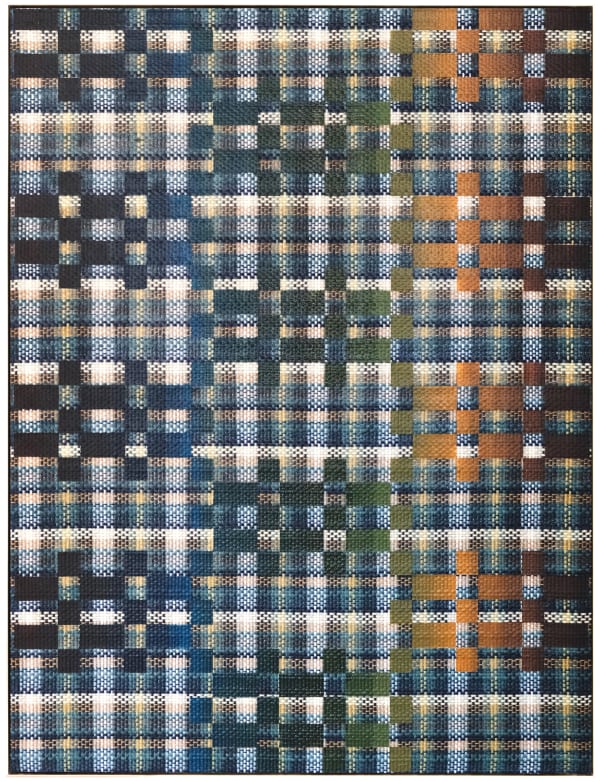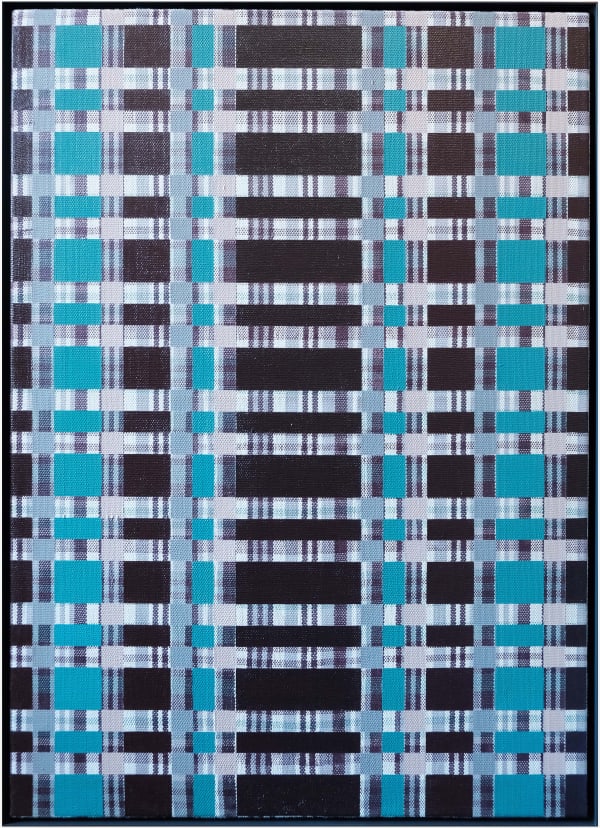Tia Ansell | Red Light Horizon: {Suite} Ponsonby
Red Light Horizon is Tia Ansell's third solo exhibition at {Suite} Gallery. Employing the loom to explore intricate weaving techniques, Tia threads together narratives of observational patterns that exist within her urban surroundings. The title and themes for this exhibition take inspiration from observations of social realities of the city including migration patterns directed by architectural and design symbols, light and sound-that change during day andnight.
The patterns collected function as a decorative motif, yet they represent the commonality between one another as materials, images and ideas are reduced to their most basic forms. Geometries demonstrating ideas of grids, repetition and familiarity are the link between theweaving pattern and painted image. The collection of weaving-paintings formally evoke constructivism and Bauhaus movements as a revival of decorative forms often marginalised in the history of art.
These weaving-paintings are meticulously labored. Her process begins by collecting observational patterns that then determine the sequence of threaded colour. This code iseither repeated (both horizontal and vertical) or another is used to create conflicting yet unified weaving plane. Once stretched, observational patterns extrapolated from the cityscape are applied as a simplified painted patch. These painted patterns include officebuilding facades, fading blue sky, checkerboard tiles, paving bricks, neon lights, sunsets and advertisements.
Red Light Horizon comprises new scaled works (four medium sized and two large), each consisting of handwoven weaving-paintings encased in an aluminum frame. Tia draws upon details from her everyday life, specifically the migration between the city and home duringthe last hour of summer daylight.Windows reflect the fading of blue skies, red light in the horizon as the sun begins to set and the city becomes neon like a beacon drawing you in. When the day is over the route through familiar streets become a habitual pattern and architectural ornaments symbolise home.







